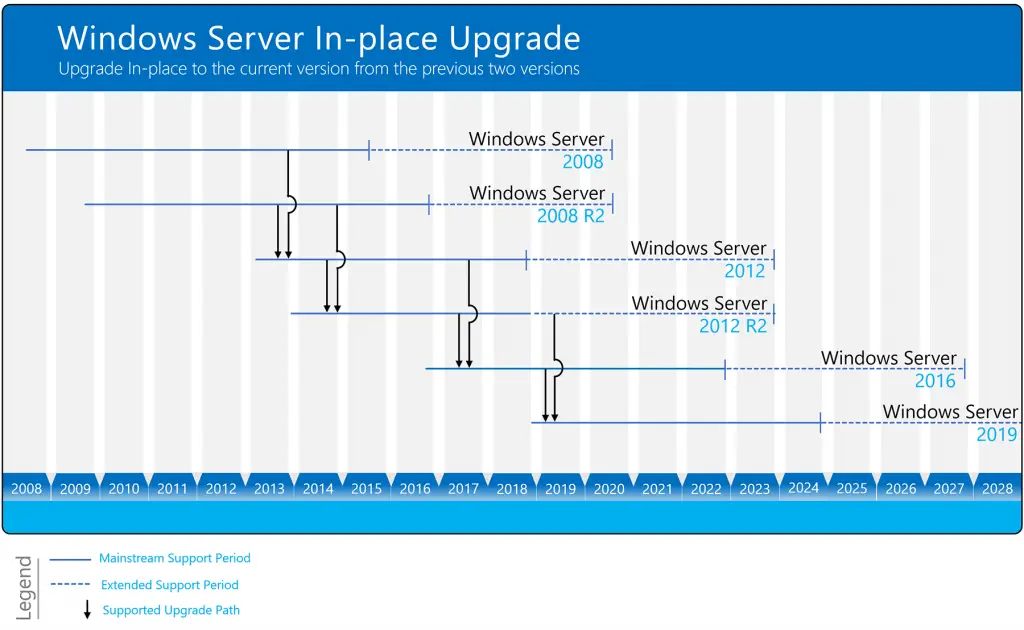Guest Operating System Upgrade or New Virtual Machine?
Virtual Machine needs guest operating system (OS) to operates same as physical machine. Operating system is a system software and has life cycle same as other software. But what should we do about updating and upgrading guest operating systems in virtual environments.
Guest Operating System Life-Cycle
Most implemented services don’t need to any new features on operating system, so we should choose guest operating system with long term support. Both Windows and Linux (Some distributions) offering different of channels. You can choose a path that more stable or choose a path for have new features.
Update vs Upgrade
When you need to newest technologies and features on the latest major version of operating system, you have to do Upgrade.
But when you are applying regular patches on operation system, you are doing Update.
Keep Update Guest Operating System
Operating systems’ vendors releasing patches during operating system life-cycle. Apply patches (Security or others) to keep guest operating system secure and stable as well as your services and business.
Even installing service packs or upgrading to a minor version of current guest operating system is an update process and there is no limitation to do it.
When We Should Upgrade Guest Operating System?
Moving (In-Place Upgrade) from any version of operating system to newer major version may be not supported, so there are some another options:
- Clean Installation: You move from an older version of the operating system to a newer version, deleting the older operating system.
- Migration: You move from an older version of the operating system to a newer version of the operating system, by transferring to a different set of hardware or virtual machine.

I don’t recommend In-Place Upgrade on virtual machine except when the older OS requirements are not different with new version.
Migrating To Another Virtual Machine
Deploying new virtual machines from template and configuring the new virtual machine is faster than upgrading operating system by installation media. Also it’s clean and fresh without any problem or unwanted software or incompatible software.
You can do the process by:
- Create basic template with default configuration for migration.
- Deploy new virtual machines for replacing with older virtual machines.
- Complete the configuration phase by Configuration Management Tools such as PowerShell DSC, Ansible, Puppet, Windows Admin Center or any other based on which one is used in your IT department.










